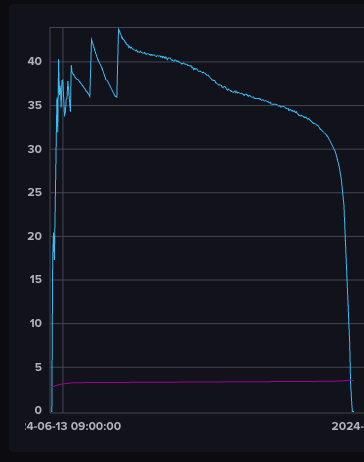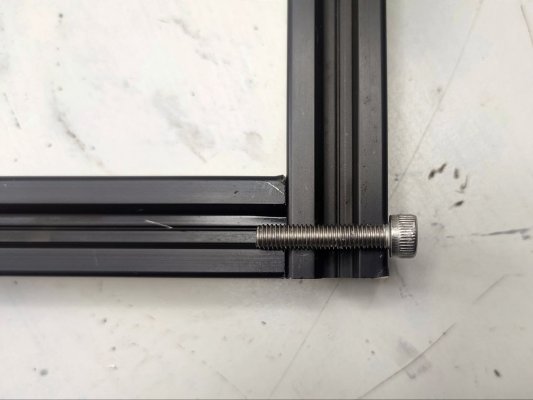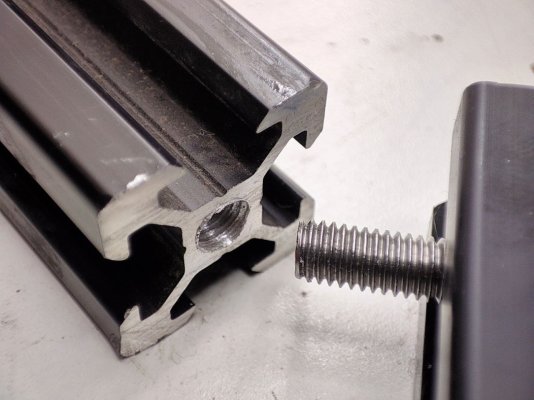rsaeon
Innovator
The capacity testing finished, the numbers didn't look right so I did it again and they still aren't close to what I was expecting:
+Ah to 3.65V (initial charge) -Ah to 2.5V (1st test) +Ah to 3.65V (full charge) -Ah to 2.5V (2nd test) Cell #1 67.9 Ah 103.108 Ah 98 Ah 103.035 Ah Cell #2 73.2 Ah 101.501 Ah 99 Ah 101.574 Ah Cell #3 67.6 Ah 103.062 Ah 100 Ah 103.100 Ah Cell #4 74.4 Ah 102.713 Ah 101 Ah 102.163 Ah
Putting aside that these cells were not top balanced before shipping (even though MDS Enterprises claims they do), the capacity testing results are not indicative of 'Grade A' cells — they're just average, just like the rest of the 'C grade' cells inside the MuscleGrid pack.
Either this is as good as you can expect from cells manufactured by Narada Power or there's an issue with my testing methodology. The variances in the second charge is indicative of something not being right (how do you drain 103Ah, put in 98Ah and get 103Ah back out of a 105Ah cell?). The first two cells were tested in a much warmer climate compared to the other two, I'd say a difference of over 10 degrees, so that might be the reason.
The numbers between the two capacity tests are close enough to rule out wiring inadequacies or insufficient contact. So the discrepancy in the full charge numbers might be within the margin of error of data collection (I did not reset the current meter between cells the second time around, the numbers were calculated cumulatively with a resolution of 1Ah vs 0.1Ah in the initial charge).
Aside from that mystery, it's not very confidence-inspiring to learn that cells that were tested 20 months ago as 105Ah by the manufacturer and presumably were kept in storage the entire time by the importer now measure between 101.5Ah to 103Ah (let's say an average of 102.5Ah). That's a loss of around 1.5Ah per year of storage or a decrease of 1.5% SoH per year.
Is this good, or bad? Looks like I have some research ahead of me.
As it turns out, these are mislabelled — they're 100Ah cells, not 105Ah.
Apart from the capacity, the size and weight of these are much closer to the Narada FE100A cells than the FE105A cells I was expecting (195mm vs 235mm and 1.9kg vs 2.2kg).
BATTERY CELL FE100A – Narada
BATTERY CELL FE105A – Narada
After some back and forth, MDS Enterprises confirmed with their (Chinese) supplier that these were intentionally mislabeled because of unspecified "BIS issues."
To their credit, MDS Enterprises have offered a return/refund but I declined. They've also clarified that they pay a third party to do the testing. I could easy see workers/technician at the testing facility randomly printing out made-up numbers on the stickers without actually doing any testing to meet their their targets. So the conflicting test numbers is not surprising but still unexpected.
To recap, these were mislabelled from the supplier and then not tested at all by the testing facility. And then they were sold to me. I guess that's how it goes these days.
With that cleared up, these are excellent 100Ah cells and should match up nicely with the rest of the lower-grade 105Ah cells from the MuscleGrid battery pack.
I did some extra testing in the middle of finding all of that out, and here's the charging profile for the newer cells:

These newer cells accept charge far more readily (a lot more peaks here) so either the MuscleGrid cells have a different manufacturing technique or they're used cells that don't accept charge as easily as new ones. That's 168 minutes, so a savings of about 38 minutes with the newer code.
What this means is that in a battery pack, the new cells will reach full charge much more quickly and the BMS will have to burn off excess power from them until the rest of the cells catch up.
Anyway, the project continues.



































